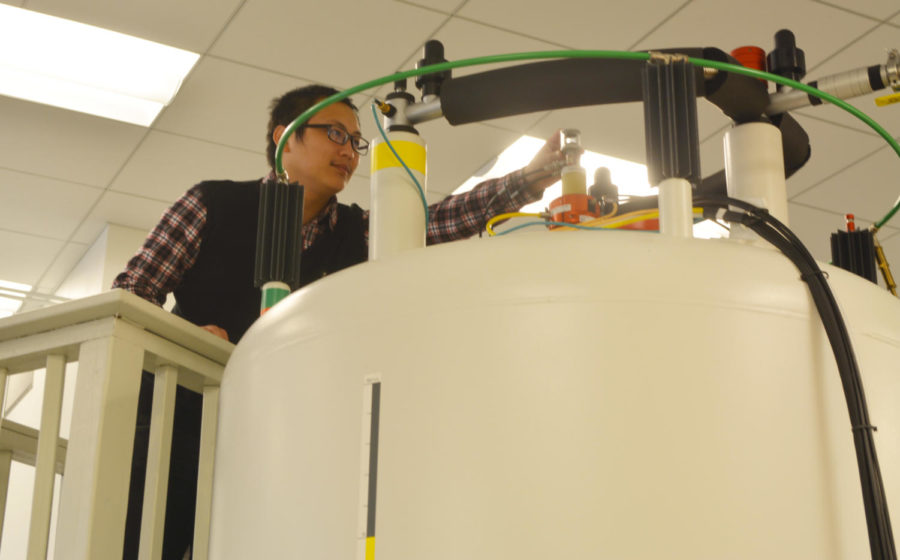New technology helps researchers discover how plant cell walls grow
Nur Surya Abu/Iowa State Daily
Tuo Wang, a graduate student majoring in chemistry, worked under Dr. Mei Hong (not in photo) researching the binding site of protein.
October 11, 2013
An ISU professor has teamed up with a Penn State professor to use new technology to discover the process by which plant cells grow.
Last fall, Mei Hong, professor of chemistry, began working with Daniel Cosgrove, professor and holder of the Eberly Chair in Biology at Penn State.
“We came upon the idea of using this new, enhanced method that she knew about, a sensitivity-enhanced method for nuclear magnetic resonance analysis, with some of our proteins that loosened cell walls,” Cosgrove said.
The focus of the experiment was finding the binding site on plant cell walls of a specific protein. This protein weakens the structure of the cell wall and allows it to grow.
The amounts of protein are so small that most methods cannot detect it easily. The team bypassed this problem with a new technology called dynamic nuclear polarization. It enhances the sensitivity of the standard technique for this type of experiment called nuclear magnetic resonance spectroscopy.
The two teams of researchers enlisted the help of Bruker Biospin Corporation, a manufacturer of scientific instruments, in order to use this technology.
“On our side, we had the general biological concepts we were trying to address and also prepared the biological materials,” Cosgrove said. “Hong was able to design some really novel experiments, and the equipment was not really available to either of us, so that’s what the Bruker people contributed.”
Tuo Wang, graduate in chemistry and part of the research team, said that the dynamic nuclear polarization technology was vital for the research.
“[Nuclear magnetic resonance] is a very powerful technique. We use a lot of NMR techniques in chemistry and also biochemistry,” Wang said. “But the limiting factor is sensitivity.”
He said this technique allowed them to do in one day what would have normally taken three years to accomplish.
They found that the target site of the protein was the part of the cellulose microfibril that is enriched with the hemicellulose xyloglucan, which has a different structure than the rest of the plant’s cellulose. When the protein binds to these sites, it weakens the structure of the cell wall. This loosens the cell wall and allows it to grow.
Cosgrove said that the results are very interesting.
“The results show us that this protein has great selectivity for the kinds of site that it targets,” Cosgrove said. “So that implies a level of structural sophistication in the growing plant cell wall that we really didn’t know about before these results.”
He also talked about the implications of this research.
“Where it’s going in the long run is a better understanding of the plant cell wall and how it grows and how plants control the growth of the cell wall,” Cosgrove said. “That of course is important to plant growth, plant productivity, crop productivity and, well, all plants that grow.”

















